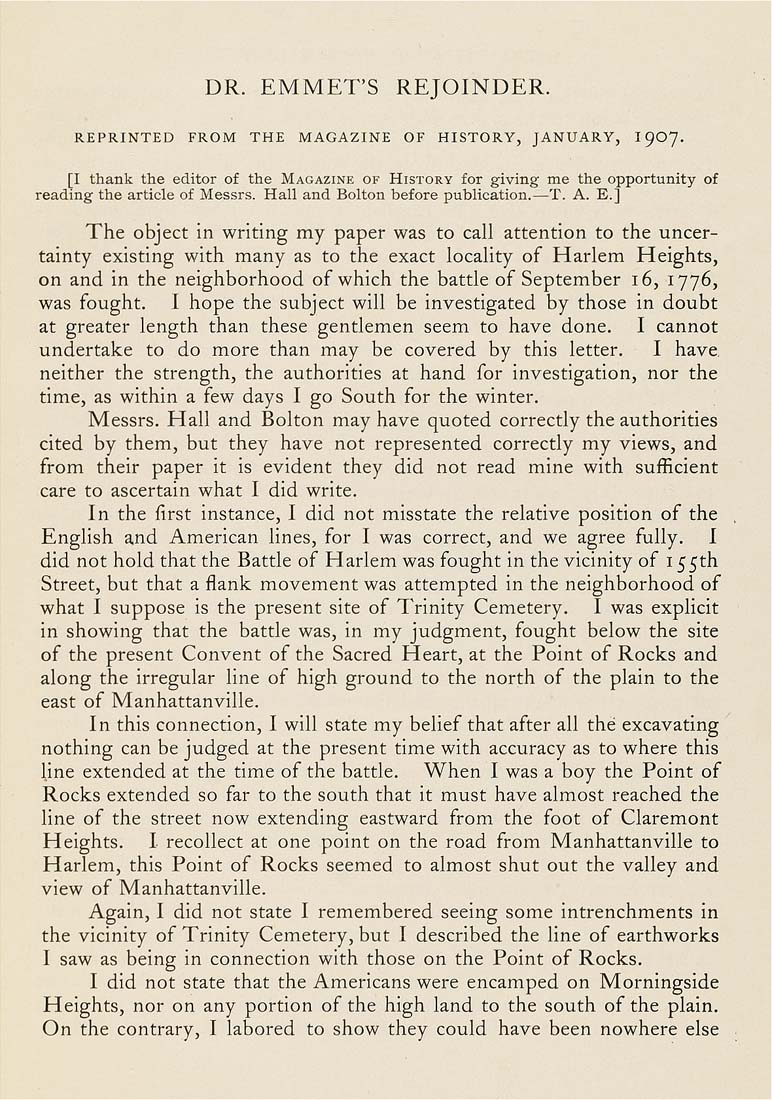DR. EMMET'S REJOINDER.
REPRINTED FROM THE MAGAZINE OF HISTORY, JANUARY, I9O7.
[I thank the editor of the Macazinf. of History for giving me the opportunity of
reading the article of Messrs. Hall and Bolton before publication.—T. A. E.]
The object in writing my paper was to call attention to the uncer¬
tainty existing with many as to the exact locality of Harlem Heights,
on and in the neighborhood of which the battle of September i6, 1776,
was fought. I hope the subject will be investigated by those in doubt
at greater length than these gentlemen seem to have done. I cannot
undertake to do more than may be covered by this letter. I have
neither the strength, the authorities at hand for investigation, nor the
time, as within a few days I go South for the winter.
Messrs. Hall and Bolton may have quoted correctly the authorities
cited by them, but they have not represented correctly my views, and
from their paper it is evident they did not read mine with sufficient
care to ascertain what I did write.
In the first instance, I did not misstate the relative position of the
English and American lines, for I was correct, and we agree fully. I
did not hold that the Battle of Harlem was fought in the vicinity of 155th
Street, but that a flank movement was attempted in the neighborhood of
what I suppose is the present site of Trinity Cemetery. I was explicit
in showing that the battle was, in my judgment, fought below the site
of the present Convent of the Sacred Heart, at the Point of Rocks and
along the irregular line of high ground to the north of the plain to the
east of Manhattanville.
In this connection, I will state my belief that after all the excavating
nothing can be judged at the present time with accuracy as to where this
line extended at the time of the battle. When I was a boy the Point of
Rocks extended so far to the south that it must have almost reached the
line of the street now extending eastward from the foot of Claremont
Heights. 1 recollect at one point on the road from Manhattanville to
Harlem, this Point of Rocks seemed to almost shut out the valley and
view of Manhattanville.
Again, I did not state I remembered seeing some intrenchments in
the vicinity of Trinity Cemetery, but I described the line of earthworks
I saw as being in connection with those on the Point of Rocks.
I did not state that the Americans were encamped on Morningside
Heights, nor on any portion of the high land to the south of the plain.
On the contrary, I labored to show they could have been nowhere else
|








